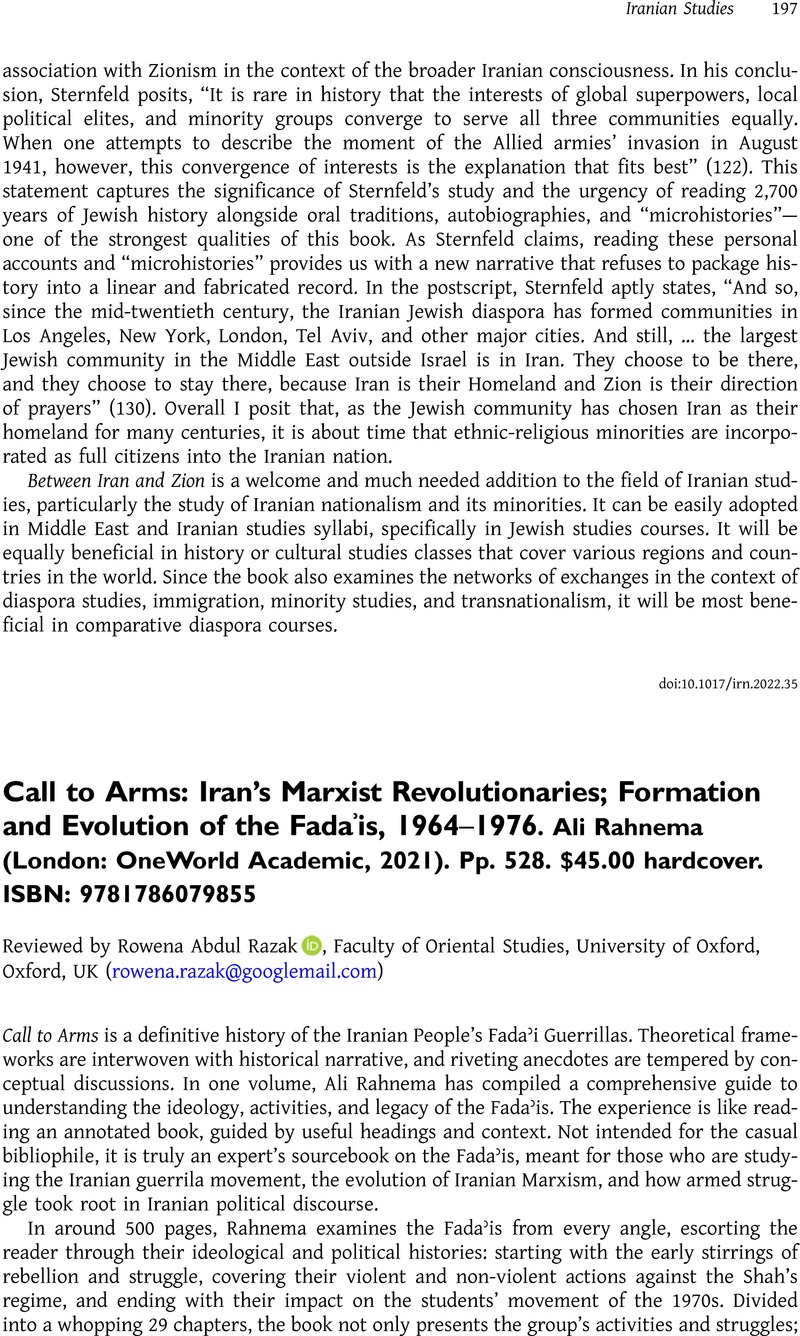No CrossRef data available.
Published online by Cambridge University Press: 28 July 2022

1 Vahabzadeh, Peyman, A Guerrilla Odyssey: Modernization, Secularism, Democracy, and the Fadaʾi Period of National Liberation in Iran, 1971–1979 (Syracuse, NY: Syracuse University Press, 2010)Google Scholar.
2 Abrahamian, Ervand, Iran Between Two Revolutions (Princeton, NJ: Princeton University Press, 1983)Google Scholar; Abrahamian, Ervand, The Iranian Mojahedin (New Haven, CT: Yale University Press, 1989)Google Scholar.
3 Afshin Matin-Asgari, review of A Guerrilla Odyssey: Modernization, Secularism, Democracy, and the Fadaʾi Period of National Liberation in Iran, 1971–1979, by Peyman Vahabzadeh, Iranian Studies 48, no. 1 (2015): 132–38.
4 Behrooz, Maziar, “The Iranian Revolution and the Legacy of the Guerrilla Movement,” in Reformers and Revolutionaries in Modern Iran: New Perspectives on the Iranian Left, ed. Cronin, Stephanie (Abingdon, UK: Routledge, 2004)Google Scholar; Abrahamian, Ervand, Tortured Confessions: Prisons and Public Recantations in Modern Iran (Berkeley, CA: University of California Press, 1999)CrossRefGoogle Scholar.
5 Abrahamian, Iran Between Two Revolutions, 487; Matin-Asgari, Afshin, “Marxism, Historiography and Historical Consciousness in Modern Iran: A Preliminary Study,” in Iran in the 20th Century: Historiography and Political Culture, ed. Atabaki, Touraj (London: I. B. Tauris, 2009)Google Scholar.
6 Kaveh Bassiri, Whatever happened to The Little Black Fish?, Iranian Studies 51, no. 5 (2018).
7 Matin-Asgari, Afshin, Iranian Student Opposition to the Shah (Costa Mesa, CA: Mazda, 2002)Google Scholar.